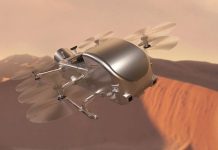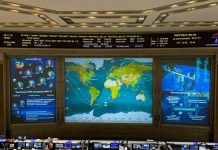The photo shows Shackleton Crater
NASA presented an image of the Shackleton crater, which is located at the South Pole of the Moon
The image was created based on images obtained by the LROC (Lunar Reconnaissance Orbiter Camera), which has been operating since 2009, and the ShadowCam module on board the South Korean Danuri satellite, which was launched in August 2022. ShadowCam was developed by Malin Space Science Systems and Arizona State University.
LROC can take detailed images of the lunar surface but has limited ability to capture images of the shadowed part of the Moon, which never receives direct sunlight. ShadowCam is 200 times more light-sensitive than LROC and can operate successfully in extremely low light conditions, revealing terrain features and details that are not visible to LROC. ShadowCam uses sunlight reflected from geological features on the Moon or Earth to capture images in shadows.

However, ShadowCam’s light sensitivity prevents it from capturing images of parts of the Moon that are directly illuminated. Because each camera is optimized for specific lighting conditions near the lunar poles, analysts can combine images from both instruments to create a comprehensive visual map of the terrain and geologic features of both the brightest and darkest parts of the Moon.
With ShadowCam, NASA can examine in detail the permanently shadowed areas of the Moon, giving scientists a much better view of the Moon’s South Pole region. This area has never been explored by humans and is of great interest to science and research because it is believed to contain deposits of ice or other frozen volatiles. Scientists believe layers of icy sediment have existed on the Moon for millions or billions of years, and the ability to study the samples could contribute to our understanding of how the Moon and our solar system evolved. Ice deposits can also serve as an important resource because they are composed of hydrogen and oxygen, which can be used as rocket fuel or life support systems.




